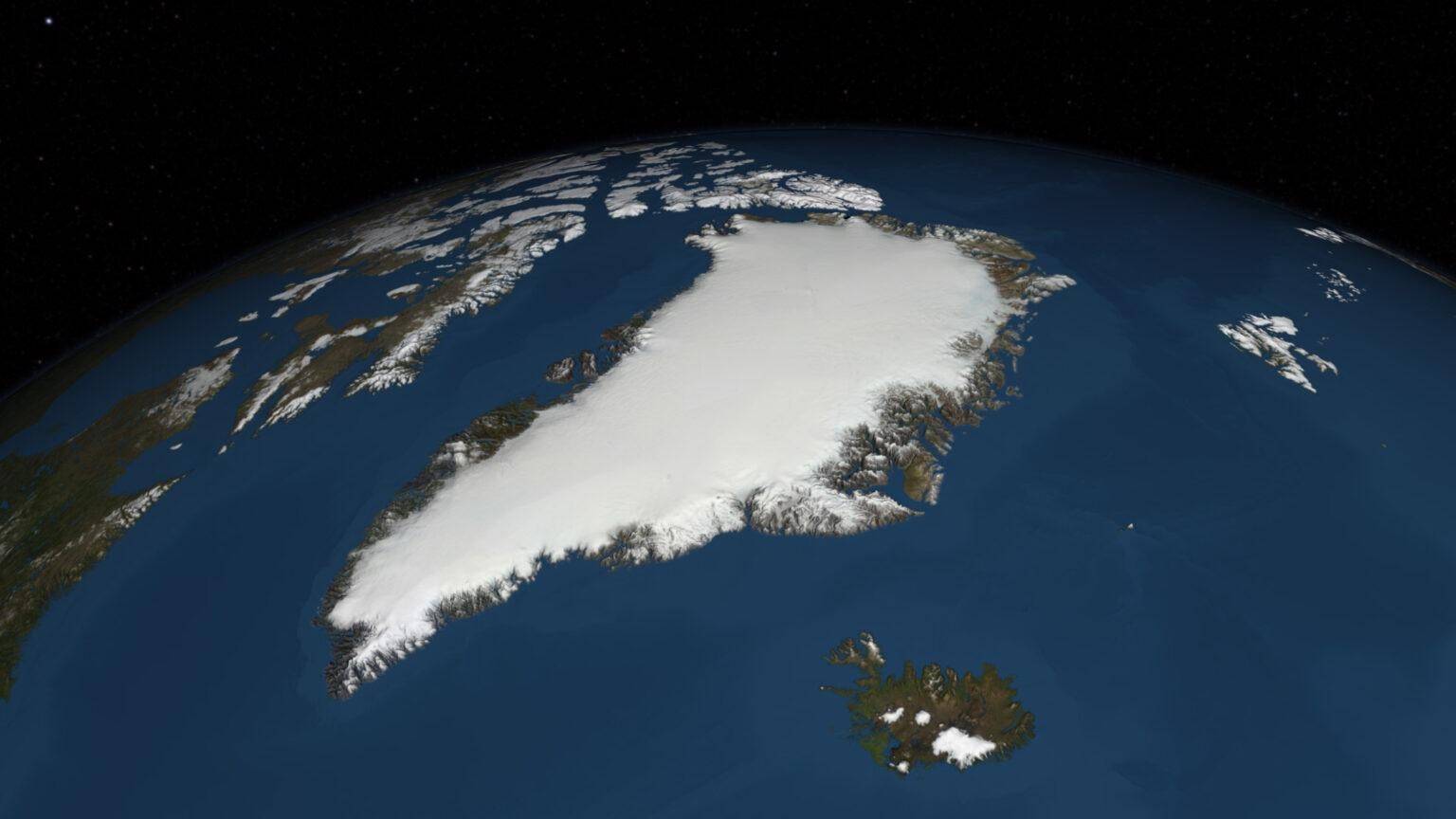Due to global warming, the Greenland ice sheet may add more than a few meters to sea-level rise in the centuries ahead; however, effective climate change alleviation measures will significantly lessen its decay.
 The recent Greenland ice sheet: area 1.8 million km2; mean thickness 1.67 km; volume 7.42 m sea-level equivalent. Image Credit: NASA’s Scientific Visualization Studio.
The recent Greenland ice sheet: area 1.8 million km2; mean thickness 1.67 km; volume 7.42 m sea-level equivalent. Image Credit: NASA’s Scientific Visualization Studio.
Sea-level rise is one of the numerous effects of global warming, and a major contributor to the rise is the melting and retreat of the Earth’s glaciers and ice sheets. As the level of the sea rises, large regions of thickly populated coastal land could eventually become unlivable without wide-ranging coastal alteration. Hence, it is important to comprehend the effect of diverse pathways of future climate change on variations in sea level caused by glaciers and ice sheets.
The evolution of the Greenland ice sheet until the year 3000 has been replicated by Professor Ralf Greve and Dr. Christopher Chambers at the Institute of Low Temperature Science, Hokkaido University, to examine the prolonged impacts of 21st-century warming. Their forecasts have been reported in the Journal of Glaciology.
The Ice Sheet Model Intercomparison Project for the Coupled Model Intercomparison Project Phase 6 (ISMIP6) was a key worldwide effort that used the newest generation of models to appraise the effect of global warming on Greenland’s and Antarctica’s ice sheets.
The goal was to offer input for the newly published Sixth Assessment Report of the IPCC. According to their contribution to ISMIP6, the researchers scrutinized the long-term outlook for the Greenland ice sheet outside the 21st century under global-warming scenarios.
Greve and Chambers employed the ice sheet model SICOPOLIS to conduct future projections for each of the 12 ISMIP6 experiments for the persistent warming pathway and the two experiments for the decreased emissions pathway, lengthening the time frame to the year 3000.
The arrangement until the year 2100 was identical to the original ISMIP6 experiments. Until 21000, the climate was presumed to stay unchanged as at the end of the 21st century, without taking into consideration further warming developments.
An unmistakable distinction between the responses to persistent warming and the decreased emissions pathways arises. By the year 3000, the persistent pathway causes ice loss of 0.71 to 3.54 m sea-level equivalent (SLE), while for the decreased emissions pathway the loss is just 0.16 to 0.4 m SLE.
These numbers are a lot higher for the 21st century. The melting and retreat of the Greenland ice sheet happen in all areas from the distant north to the south, and it changes progressively over time. Even though the loss can be as big as 50% of the total ice volume, it does not progress as an unexpected instability.
This research shows plainly that the effect of 21st-century climate change on the Greenland ice sheet goes well past the 21st century itself, and the most serious implications — perhaps a multi-meter contribution to sea-level increase — will probably only be witnessed later in the millennium.
For this research, only a single ice-sheet model (SICOPOLIS) was employed, and the results were acquired under the simplifying hypothesis of the persistent late-21st-century climate.
Going forward, the ISMIP6 community will carry out simulations with more accurate future climate settings beyond 2100, covering the complete range from continuing, extended warming to a decrease below 21st-century extremes.
Other research groups will add to the results acquired with various ice-sheet models. This will offer a more comprehensive picture of the anticipated continuing mass loss of the Earth’s ice sheets.
Funding
This study was aided by Japan Society for the Promotion of Science (JSPS) KAKENHI (JP17H06104, JP17H06323); a Leadership Research Grant (Category 2) of Hokkaido University’s Institute of Low Temperature Science: and by the Japanese Ministry of Education, Culture, Sports, Science, and Technology (MEXT) through the Arctic Challenge for Sustainability project ArCS II (JPMXD1420318865).
Journal Reference:
Greve, R. & Chambers, C. (2022) Mass loss of the Greenland ice sheet until the year 3000 under a sustained late-21st-century climate. Journal of Glaciology. doi.org/10.1017/jog.2022.9.